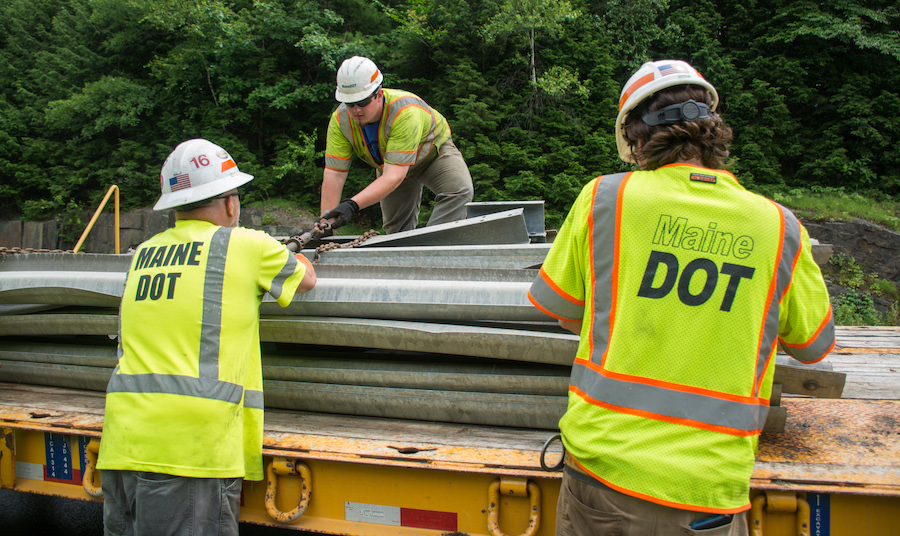With contractors hungry for work, the Maine Dept. of Transportation is adding tens of millions in new projects this year as it seizes a favorable pricing window opened by the pandemic and the economic downturn.
The MaineDOT is putting out to bid an additional $33.5 million in new projects, in addition to putting out to market again another $20.5 million in projects whose bids were previously rejected last year as too high.
To help pay for it all—and help cover for a looming decline in revenue amid a drop in gas tax revenues—state transportation officials are putting a proposed $105 million bond issue before state voters on July 14.
Such bond issues are routine, annual occurrences, designed to raise money for projects slated to hit the market in the following year.
However, this year, Maine transportation officials plan to accelerate their spending, and will use the proceeds from the bond sale to pay for its expanded lineup of projects slated for 2020.
The state bond issue, in turn, will be matched with $275 million in federal and other funds.
“I know some (state) DOTs are scaling back,” said Bruce Van Note, commissioner of the MaineDOT. “Prices are more affordable, we are employing more people when Maine needs it most, and it’s safer.”
All told, MaineDOT plans to put out $522.5 million in projects out to bid this year, compared to last year’s plan, which called for $460 million in roads, highways and bridges.
The actual amount spent is likely to be lower, based on past practice, with $400 million actually spent last year, though even with that caveat, there is likely to be a significant increase.
The ramped-up spending has yielded an array of projects, from a $10,000 signage project to an $85 million bridge, Van Note said.
On the MaineDOT’s work list is a significant amount of repaving work, various bridge repairs and replacements, a $1.75 million intersection reconstruction in Auburn, not to mention several million dollars’ worth of runway and other work at Bangor International Airport.
So far, MaineDOT has also been benefiting from some significant savings as well it its bid to ramp up work, with contractors sharpening their pencils in a leaner environment.
It comes after state highway officials were forced to pull back on projects last year after the bids came in too high.
Some bids were coming back 30% over budget, with contractors busy building hotels and other projects in Portland.
“The market was superheated with vertical construction,” Van Note said.
Since then, bids have been coming in below estimates, with one repaving project $900,000 below the what state highway officials had projected.
“DOT work is not necessarily sexy or high margin, but it starts to look a lot better when some of those projects are not around,” Van Note said.
MaineDOT has also been able to save money on labor and other costs as well, with the ability to do roadwork during the day as traffic on highways across the state thinned out in the wake of the coronavirus.
The drop in traffic has also provided a boost in safety as well for crews out on the highways and byways doing the work.
Still, the drop in traffic has also put a major dent in MaineDOT’s finances, with a significant drop in the revenue generated by the state’s gas tax.
While not as bad as first feared—more than $110 million—the upcoming $105 million bond vote on July 14 should help plug that gap.
But while some other states have put a hold on work, Maine has decided to keep pushing ahead, Van Note said.
“One thing everyone is learning from this pandemic is once you stop everything, reopening is more difficult than stopping,” Maine’s highway chief said.





